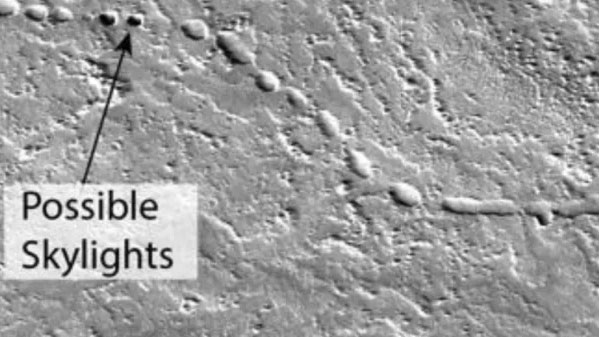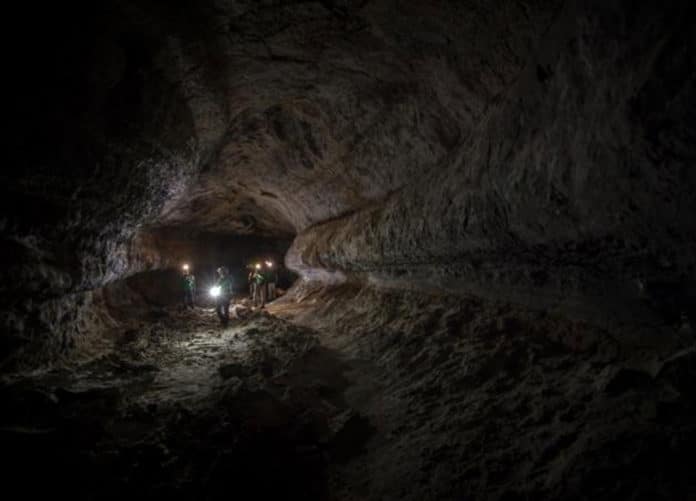Lava tubes can be found on planet Earth and the subsurface of the Moon and Mars. Evidence of lava tubes was often inferred by observing linear cavities and sinuous collapse chains where the galleries cracked.
These collapse chains represent ideal gateways or windows for subsurface exploration. The morphological surface expression of lava tubes on Mars and the Moon is similar to their terrestrial counterpart.
A new study by the Universities of Bologna and Padua and its coordinators at Francesco Sauro and Riccardo Pozzobon offers an estimate of the (greater) size of their lunar and Martian counterparts.
Scientists found that lava tubes on Mars and the Moon are so wide they can host planetary bases.
Scientists measured the size and gathered the morphology of lunar and Martian collapse chains (collapsed lava tubes), using digital terrain models (DTMs). The models were obtained through stereoscopic satellite images and laser altimetry taken by interplanetary probes.

They then compared the data to topographic studies about similar collapse chains on the Earth’s surface and laser scans of the inside of lava tubes in Lanzarote and the Galapagos. These data allowed to establish a restriction on the relationship between collapse chains and subsurface cavities that are still intact.
Scientists found that lava tubes on Mars and Moon are respectively 100 and 1,000 times wider than those on Earth.
Riccardo Pozzobon said, “Tubes as wide as these can be longer than 40 kilometers, making the Moon an extraordinary target for subsurface exploration and potential settlement in the wide protected and stable environments of lava tubes. The latter are so big they can contain Padua’s entire city center.”
Matteo Massironi, who is professor of Structural and Planetary Geology at the Department of Geosciences of the University of Padua said, “What is most important is that, despite the impressive dimension of the lunar tubes, they remain well within the roof stability threshold because of a lower gravitational attraction.”
“This means that the majority of lava tubes underneath the maria smooth plains are intact. The collapse chains we observed might have been caused by asteroids piercing the tube walls. This is what the collapse chains in Marius Hills seem to suggest. From the latter, we can get access to these huge underground cavities.”
Francesco Sauro concludes: “Lava tubes could provide stable shields from cosmic and solar radiation and micrometeorite impacts that are often happening on planetary bodies’ surfaces. Moreover, they have great potential to provide an environment in which temperatures do not vary from day to night. Space agencies are now interested in planetary caves and lava tubes, as they represent the first step towards future explorations of the lunar surface (see also NASA’s project Artemis) and towards finding life (past or present) in Mars subsurface.”
Scientists noted, “this study opens up to a completely new perspective in planetary exploration, which is increasingly focusing on the subsurface of Mars and the Moon.”
Journal Reference:
- Francesco Sauro et al. Lava tubes on Earth, Moon, and Mars: A review on their size and morphology revealed by comparative planetology. DOI: 10.1016/j.earscirev.2020.103288
